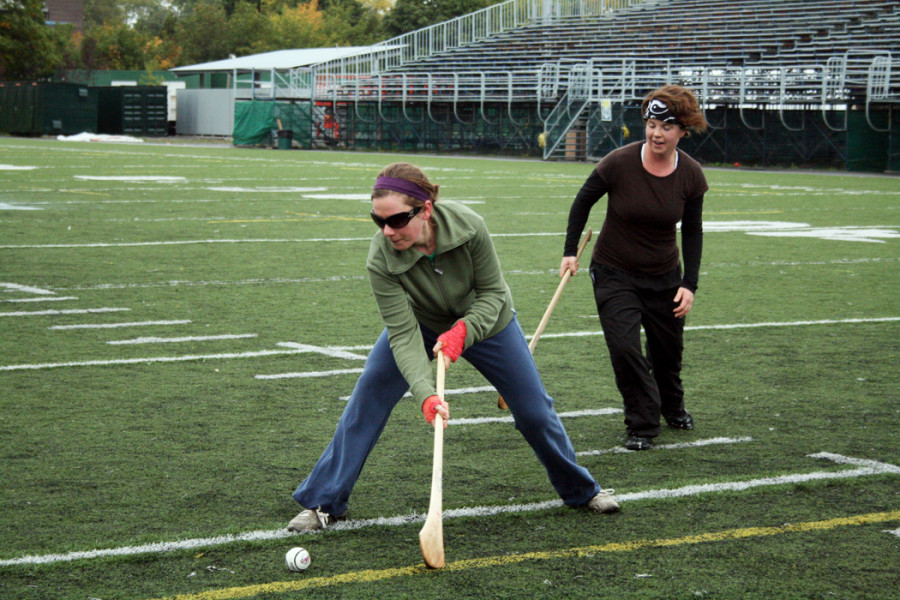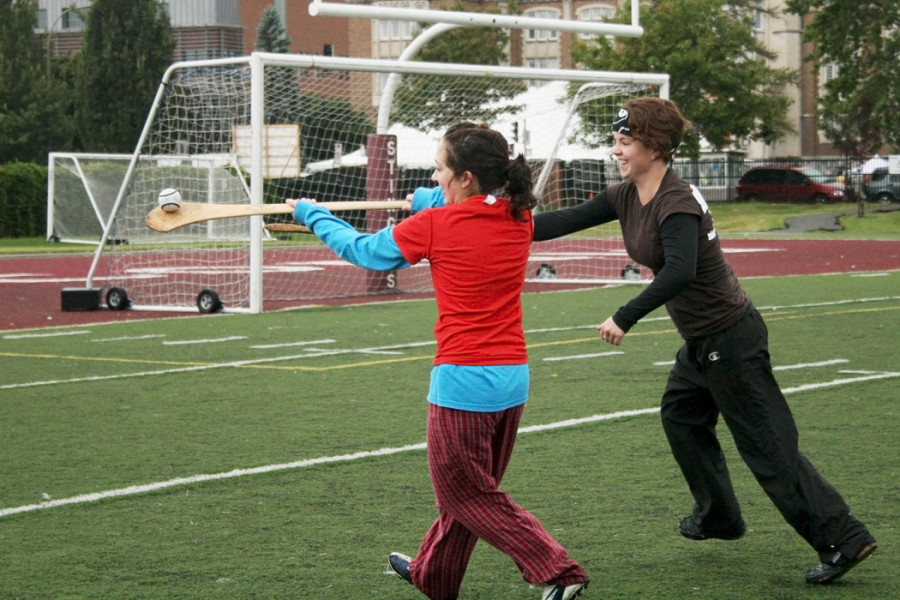Sliotars and Hurleys
Concordia Hosts Hurling Workshop
Concordia students, alumni and members of the public were invited to learn the fundamentals of hurling during a workshop organized by Irish Concordia and the Montreal Shamrocks last Sunday morning at Loyola Campus.
“[Irish Concordia President] Angie Parker emailed the club and asked us if we could come out,” said Shamrocks member David Keane. “So we were happy to bring hurleys [hurling sticks], show people how to play and get a little game going here.”
An ancient sport of Irish origin, hurling is known for its similarities to field hockey, lacrosse, baseball and soccer. A match in hurling is played for two equal halves of 35 minutes with 15 members a side on a grass surface spanning up to 145 metres in length.
After a 30-year absence from league play, the Shamrocks were revived when they appeared in a tournament last year in Portland, ME, and just recently collaborated with Irish Concordia—a club aiming to shed light on the positive aspects of Irish culture.
“We looked into other options like sports and music, and then I came across the Gaelic Athletic Association and the Montreal Shamrocks,” said Parker. “At first I was looking at the GAA to possibly do Gaelic football and then I saw on their website that they had hurling.”
The goal for a “hurler,” otherwise known as a player, is to use his hurley to gain points by firing the “sliotar”—the ball which is used—either into or over the opposition’s goal.
Players can gain possession of the ball only by picking it up with their sticks and “soloing” with it, or carrying it, while maintaining a fast pace toward goal. Hurlers can also hold the ball, but only for a limit of four steps, before passing it to a teammate.
A defensive player is allowed to hook an opponent’s stick with the bottom of his or her hurley and shoulder-to-shoulder contact is permitted when fighting for a loose sliotar.
While hurling can be a dangerous sport, helmets were only made mandatory this year.
Heather MacDougall, a PhD student and film studies professor at Concordia, was among roughly 10 people who attended the workshop, and found out about it through Parker, who works in the Canadian Irish studies department.
“I’m not really a sporty type, but I have seen hurling before and thought it would be interesting to try out,” said MacDougall. “I think the one-day workshop format was just exactly what I was looking for.”
The Shamrocks do, however, hold practices every Saturday at Jeanne Mance Park in the Plateau at 10 a.m. for those interested in playing on a consistent basis.
“We’re just trying to get the interest for hurling going and while we’re playing amongst ourselves for now, we’ll try and branch out to more established teams,” said Keane, who also noted that workshops like the one held on Sunday help the recruiting process.
“You’ve got to get players from somewhere, and just by advertising, nobody really knows what [hurling] is. You’ve got to actually go out and show people, and that’s why we’re at Jeanne Mance Park every Saturday.”
This article originally appeared in Volume 31, Issue 07, published September 28, 2010.


__900_576_90.jpg)

_600_832_s.png)

_600_375_90_s_c1.jpg)
__thumb_600_375_90_s_c1.JPG)

